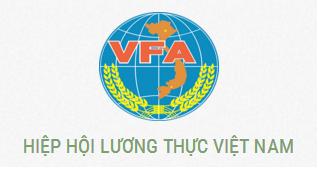Rice is one of the five major food crops in the world, along with Zea mays L., wheat (Triticum sp.), Cassava (Manihot esculenta Crantz, cassava), and potato west (Solanum tuberosum L.).
Rice in this article refers to two species (Oryza sativa and Oryza glaberrima) in the Poaceae family, native to tropical and sub-tropical Southeast Asia and Africa. These two species provide more than a fifth of all calories consumed by humans. Rice is a species of plant that lives one year, may be as high as 1-1.8 m, sometimes higher, with thin, narrow leaves (2-2.5 cm) and 50-100 cm long. The small self-pollinating flowers grow into clusters of curved or drooping branches, 30-50 cm long. The grain is a grain of grain (small, hard grain of cereal) 5-12 mm long and 2-3 mm thick. Young rice is called plating. After soaking, one can sow seeds that have sprouted in rice fields that have been plowed, harrowed carefully or through sowing in their own fields so that young rice can thrive well after a period of time. then plucked to transplant in the main rice field. Products obtained from rice is paddy. After husking, the main products are rice and rice and rice by-products. Rice is the staple food of more than half of the world’s population (mainly in Asia and Latin America), making it the most consumed food. In English, the word rice (rice, rice) comes from arisi in Tamil.
Planting
Rice cultivation is best suited in areas with low labor costs and heavy rainfall, as it requires a lot of labor to cultivate and requires a lot of water to grow well. However, rice can be grown anywhere, even in hillsides or mountains. Rice is the third largest crop in the world, behind only maize and wheat. Although rice species originated in southern Asia and parts of Africa, centuries of trade and export of paddy, rice has made it prevalent in many civilizations.
Common rice is sown or transplanted in wet rice fields – irrigated or immersed plots in a deep layer of water to ensure water supply to the rice plant and prevent weeds from growing. When rice grows and becomes predominantly in paddy fields, water can be irrigated cyclically until harvesting. Irrigated rice fields increase yields, although rice can be grown in drier areas (eg hillside terraced fields) with weed control thanks to chemical treatments.
In some areas with deep water levels, it is also possible to grow rice varieties that are popular with the local people. These varieties have a long body that can withstand water depths of over 2 meters (6 ft).
The paddy fields are also suitable habitats for many bird species such as storks, cauldrons, herons or prickly amphibians, amphibians such as frogs, frogs or reptiles such as snakes or giant crustaceans, shrimps crab or snail. Many animals have useful functions in controlling pests.
Although growing in rice fields or dry fields, rice still requires much more water than other crops. Rice cultivation is a work of contradictory factors in some areas, such as the United States and Australia, where rice cultivation accounts for 7% of their water resources. but only 0.02% of GDP. However, in countries with cyclical and cyclical cyclical seasons, rice sowing has the effect of keeping water supply more stable and preventing floods from abruptly.
Blast disease, caused by Magnaporthe grisea, is the most noteworthy disease affecting rice yield. Rice is also infested with a number of pestilent insects such as flea, leaf blight, brown backed leafhopper (Nilaparvata lugens), grasshoppers, thrips, white backpacks, dark blue aphids, gray hoppers, bugs (Pentatomidae) worms, creepers, worms, blue worms, flying flies, brown worms, etc.
Food
Rice mortar in Japan
By the 1920s
The grain is first milled to separate the outer shell, this is the milled rice and rice husk. This process can be continued, to remove the germ and the remnants of the cortex, called bran, to produce rice. The rice can then be polished with glucose or talc in a process known as polishing of rice, processed into rice flour or paddy processed into raw boiled rice. Rice can also be supplemented with nutrients, especially those lost during the milling process. While the simplest method is to mix the flour with nutrients that are easily washed away by water (in the United States, such processed rice needs to have a rice wash warning). The more complex the use of nutrients directly on the grain, wrapping the grain with a layer of water insoluble anti-wash.
While washing rice reduces the usefulness of enriched rice, it is extremely necessary to create a more delicious and stable taste when polished rice (illegal in some countries , as the United States) is used.
Rice bran, called nuka in Japan, is a valuable commodity in Asia and is used for a variety of daily necessities. It is a damp, moistened oil that is heated to produce a healthier cooking oil. Another application is to make a beam of vegetables called tsukemono.
In many places, the rice is ground into powder to make a variety of drinks such as amazake, horchata, rice milk and sake. Rice flour is generally safe for people who need a gluten-free diet.
Processing and cooking
The main product from rice is rice. Rice can be cooked into rice by boiling in water (just enough) or by steam. Electric rice cookers are very popular in Asia, simplifying the process.
Rice can also be cooked into porridge by giving more water than usual. This way the rice will be saturated and become soft, blossoming. The porridge are easy to digest and so it is especially suitable for people who are sick.
When cooking uncooked rice, a way to cook nutritious foods called GABA or GBR Rice can be used. It consists of soaking the rice for about 20 hours in warm water (38 ° C or 100 ° F) before cooking. This process stimulates germination, and it activates the enzymes present in rice. In this way, more amino acids can be captured.
Wikipedia.org Resources

















